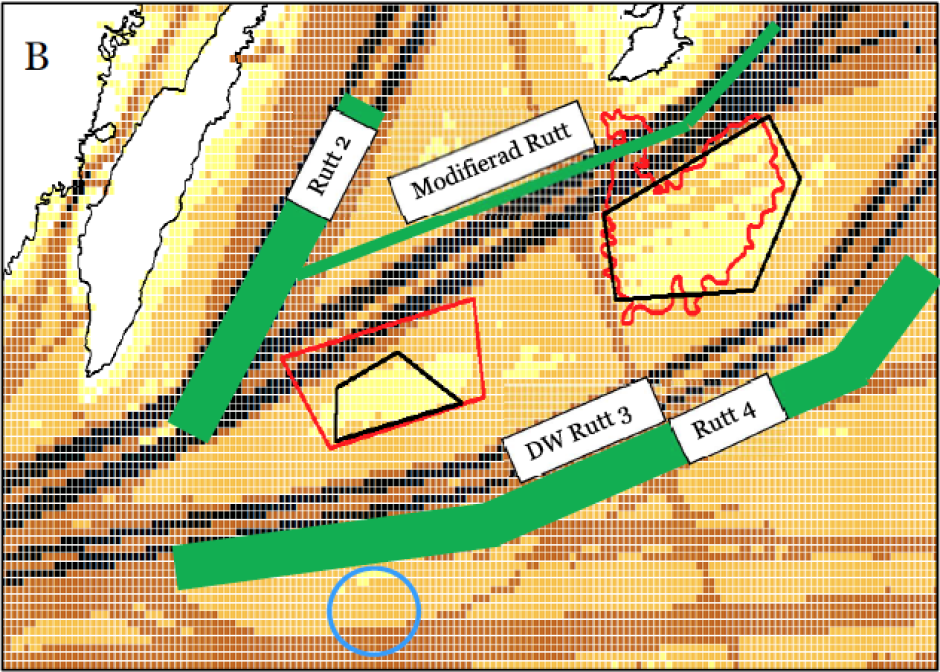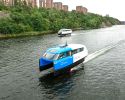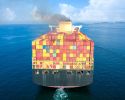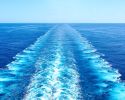Routeing in order to improve nature conservation

By using a different route planning, sensitive areas of the Baltic Sea could be better protected. In a new report, ordered by the Swedish Agency for Marine and Water Management, Kjell Larsson, professor at Kalmar Maritime Academy, Linnaeus University examines natural values and possible shipping routes.
Around three large offshore banks, Hoburgs Bank and Northern and Southern Midsjö banks in the Central Baltic Sea there are natural assets that have both national and global importance. The globally threatened long-tailed duck is dependent on the area and harbour porpoises use the area for mating and calving.
Although shipping is an energy-efficient mode of transport, intense shipping in the area has proved to be problematic, mainly because of recurring operational oil spills. There is a general perception that most environmental damage occurs when the oil spill reaches the shore, but when it comes to birds and bird population, it's usually the other way around. The greatest effect of oil spills on birds can be seen in species that live far from land, close to shipping routes.
The Swedish Agency for Marine and Water Management has called for more detailed information about the offshore banks in the area. Therefore, Kjell Larsson, who also is a member of the Lighthouse program committee investigated how shipping affects certain natural values of the area and explored if alternative routes for shipping can be a solution.
To eliminate the operational oil spill from vessels has proved to be difficult and a reasonable step may instead be to, as far as possible, move the intensive ship traffic from the sensitive areas. That would mean oil spill gets a greater chance to evaporate or be mixed into the water before it reaches the sensitive marine areas. Or that there is more time to clean up the oil if it is possible. Modified shipping routes also means that the underwater noise, affecting porpoises, may decrease.
But changing shipping routes also come with consequences. Longer routes may mean that more fuel is consumed. In the report Kjell Larsson writes that efficient emission control and alternative fuels can solve problems with large emissions of nitrogen and sulphur oxides. What remains is the balance between potentially increasing carbon emissions and improved nature conservation.
Given that the main route at the banks goes over relatively shallow areas (20-50 m depth), many ships receives a squat effect. A squat effect means that a vessel may get an increased fuel consumption due to increased resistance through the water when driving over a shallow area. Therefore, a longer route that runs over a greater depth does not necessarily mean an increase in fuel consumption for all vessels.
Above all, the route between the TSS Off Öland Island and TSS North Hoburgs bank has proved to be harmful to wintering birds at the Natura 2000-sites Hoburgs Bank and Northern Midsjö Bank. Especially between October and April, the traffic should be reduced and the report mentions several proposals for route changes that should be investigated further. For example, a new route for ships trafficking ports in Latvia and Riga is suggested.
Related content:
-
 NextWave – en podd som ska locka unga
NextWave – en podd som ska locka unga -
 Ny studie: Eldrivna pendelbåtar kan effektivisera Stockholms kollektivtrafik
Ny studie: Eldrivna pendelbåtar kan effektivisera Stockholms kollektivtrafik -
 Sjöfartens utsläpp ökar
Sjöfartens utsläpp ökar -
 Sociala relationer påverkar val av bränsle
Sociala relationer påverkar val av bränsle -
 Sjöfartens omställning kräver ”mjukare” påtryckningar
Sjöfartens omställning kräver ”mjukare” påtryckningar -
 Hon hade avtalad tid med Kapten ynkrygg
Hon hade avtalad tid med Kapten ynkrygg -
 Lighthouse omvärldsanalys 2025 – osäkerhet och tullar präglar sjöfarten
Lighthouse omvärldsanalys 2025 – osäkerhet och tullar präglar sjöfarten -
 Se seminariet Shipping in the Marine Environment
Se seminariet Shipping in the Marine Environment -
 Vad betyder egentligen de 90 procenten?
Vad betyder egentligen de 90 procenten? -
 Hålla där...
Hålla där...

